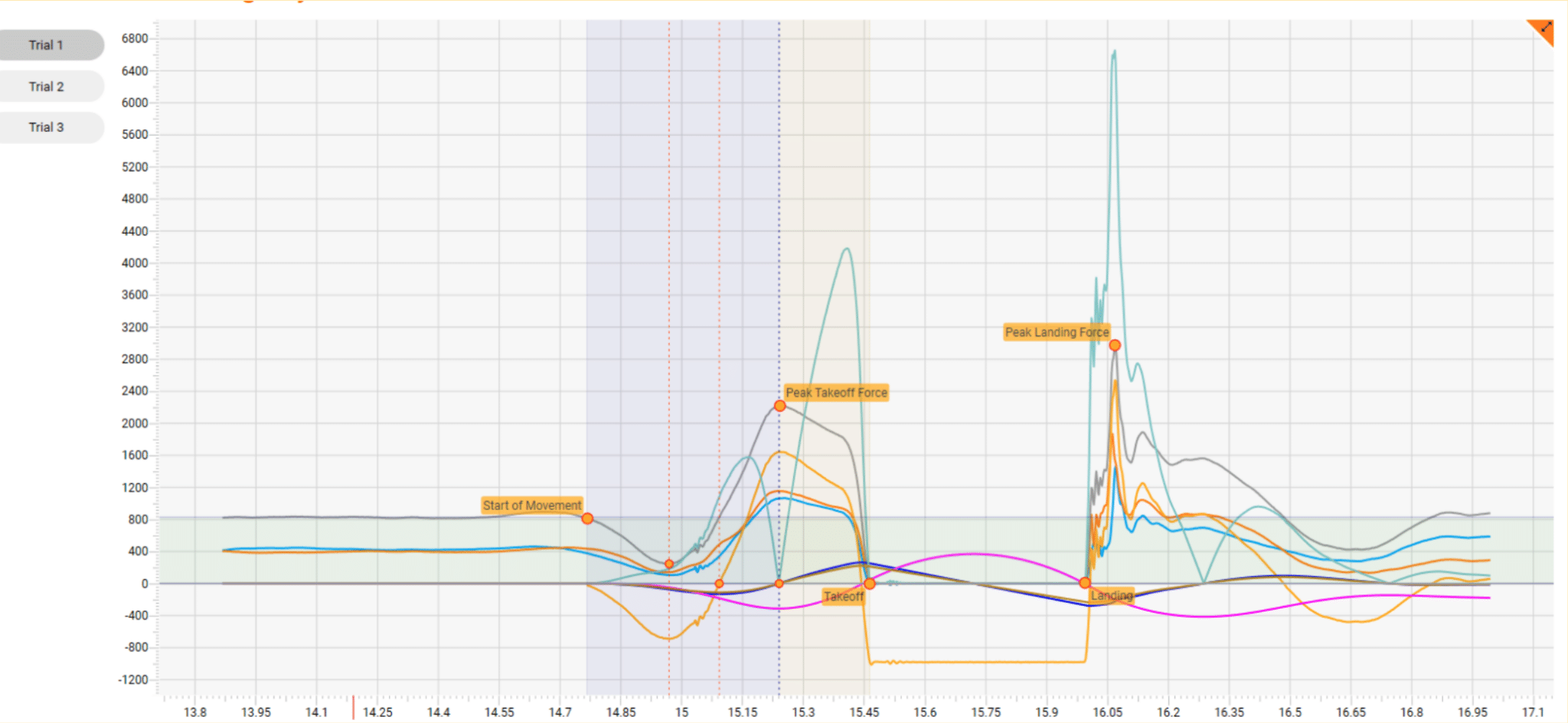Athlete Profiling
One Click Analysis to assess and measure your:
Previously only limited to professional teams, Resync Physiotherapy has invested in this technology to assist in the rehabilitation of its patients and to improve the sporting performance of its athletes.
Force plate technology allows our team to make an informed decision around your rehabilitation and strength training.
ForceDecks dual force plates also enable unparalleled insights into neuromuscular performance, asymmetries, and movement strategies to help improve health and performance.

What are these Tests
Mobility and neuromuscular control
Good mobility is required in order to access the full length and power of our muscles during sport. Poor mobility can result in reduced biomechanical efficiency and higher injury risk. Therefore, a watchful eye should be kept on our mobility in the season to get the most out of our body for competitive match play.
Countermovement Jump
The Countermovement Jump (CMJ) is arguably the most popular force plate test due to its wide range of applications and a significant number of available metrics.
The CMJ test reports information on numerous phases and offers excellent asymmetry analysis, meaning we can see if there are any differences from one limb to the other. The goal of the CMJ is to jump as high as possible.
Single Leg Counter-movement Jump
The Single-Leg Countermovement Jump (SL CMJ) is the unilateral version of the ever-popular CMJ. Although the test is similar, and we get some very good asymmetry results from the double leg version, the SL CMJ can give us more in-depth feedback on what each limb is doing during the jump.
In addition, it helps us to understand your jump strategy on a single leg, which may not show up with double leg testing.
Drop Jump
The Drop Jump (DJ) test evaluates reactive ability and an athlete/client's stretch-shorten cycle capacity. The test has many similarities with repeat jumping and cutting manoeuvres in athletics.
The goal of the DJ is to jump as high as possible but after minimal ground contact time.
Single Leg DJ
The Single-leg Drop Jump (SL DJ) is the unilateral version of the DJ test. Just like the SL CMJ, performing the test on a single leg allows us to understand your body's force production and braking strategy on a single limb.
Isometric Mid-Thigh Pull
A maximal isometric action allows individuals to produce a greater force than a maximal concentric action. For this reason, the isometric mid-thigh pull (IMTP) is often used to measure maximum strength [1, 2] by both researchers and strength and conditioning coaches.
The IMTP requires an individual to pull on a fixed barbell with a maximal effort for 3-5 seconds. When performed on top of a force plate, the test can quantify peak force, relative force, rate of force development (RFD), time to peak force, etc.
Having this type of data can help your therapist design a strengthening program to specifically target your weaknesses. This is done my implementing weight duration and speed of each exercise to target deficits in your strength qualities.
Stop wasting time doing exercises that are not specific to your needs. Get assess and get a comprehensive report on what gaps you need to close in your athletic profile.




“Diarmuid Hegarty - Clinical Director Resync PhysiotherapyHaving this type of data can help your therapist design a strengthening program to specifically target your weaknesses. This is done my implementing weight duration and speed of each exercise to target deficits in your strength qualities.
